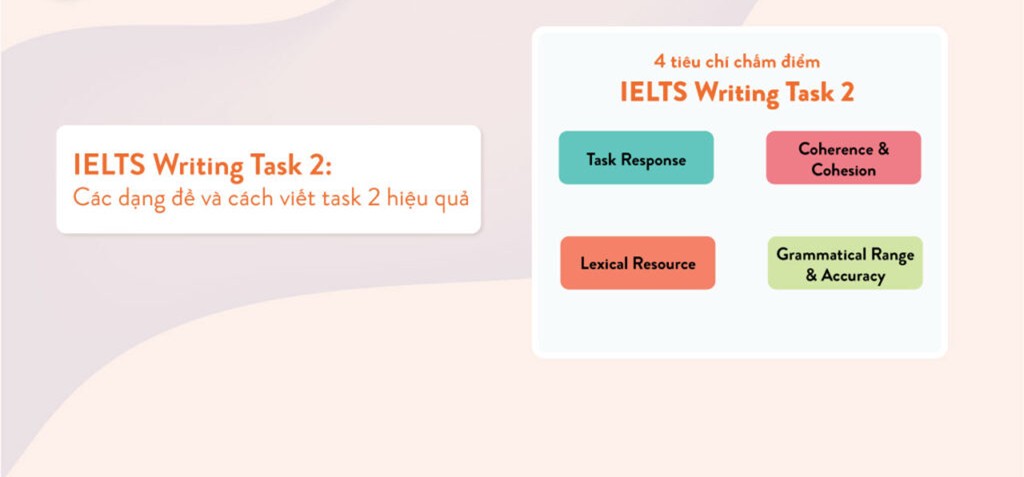Trong các bài viết trước của ENVIS, chúng ta đã tìm hiểu cách chinh phục các dạng bài Diagram Labelling, Note/table/flowchart Completion, Information Identification question, và Matching Headings. Hôm nay, hãy cùng tìm hiểu cách làm dạng bài Matching Features hiệu quả nhé!
Giới thiệu dạng bài Matching Features trong IELTS Reading

Dạng câu hỏi Matching features yêu cầu các thí sinh ghép các câu mà đề bài đưa ra với đối tượng thích hợp được nêu ra trong một danh sách cho trước. Danh sách có thể là danh sách người, danh sách quốc gia, danh sách các mốc thời gian, v.vv… phụ thuộc vào nội dung của bài đọc. Danh sách gồm các phương án tên người là dạng danh sách phổ biến nhất trong dạng bài này.
Ngoài ra, ở dạng bài này, có thể một số phương án sẽ không được sử dụng và những phương án khác có thể được sử dụng nhiều hơn một lần.
Lưu ý rằng bạn cần đọc kỹ yêu cầu đề bài. Thông thường, đề bài sẽ yêu cầu ghi các chữ cái (letter) đại diện cho đáp án nên hãy ghi chữ cái (A, B hoặc C) và đừng ghi tên hay ghi năm vào tờ đáp án (Answer Sheet) nhé!
Các bước làm bài Matching Features hiệu quả
B1: Đọc hiểu ý chính của các Statements đưa ra trong đề bài
Các bạn cần tìm các thông tin chi tiết trong bài nên hãy chắc chắn đọc kỹ các statements và hiểu rõ chúng. Bạn có thể gạch chân các keywords và dựa vào đó để tìm ra manh mối cho việc tìm kiếm thông tin trong bài đọc.
B2: Khoanh vùng thông tin trong bài đọc dựa vào keyword
Dạng bài Matching Features bao gồm 2 phần thông tin:
- Danh sách của những câu hỏi thể hiện ý kiến hoặc các đặc điểm của sự vật, sự việc
- Danh sách của tên người thể hiện các ý kiến đó hoặc sự vật, sự kiện mang đặc điểm đó
Thông thường, thí sinh có xu hướng dựa vào danh sách tên riêng để làm manh mối tìm kiếm thông tin bên bài đọc do tên riêng thường viết hoa, dễ tìm kiếm. Tuy nhiên, cách này có một nhược điểm là bên bài đọc có thể đề cập đến người đó bằng các đại từ He/she, hoặc chỉ đề cập đến họ của người đó, khiến thí sinh mất thời gian tìm tên người đó và đọc hết tất cả các ý kiến mà người đó trình bày.
Cách tốt nhất là thí sinh dựa vào danh sách các câu thể hiện ý kiến, vì trên thực tế là một ý tưởng/ ý kiến thì chỉ đề cập một/hai lần trong bài, nhưng tên người thì có thể đề cập nhiều lần trong bài. Điều này sẽ giúp thí sinh tìm kiếm thông tin nhanh và chính xác hơn.
B3: Đọc hiểu ý chính của bài đọc, đối chiếu keyword & Chọn đáp án
Thí sinh không nên đọc từng câu từng chữ trong bài đọc. Thay vào đó bạn hãy đọc lướt, dừng lại và nắm các ý chính trong bài, hay nói khác hơn là scan bài đọc. Bạn có thể tham khảo Kỹ thuật Scanning trong IELTS Reading tại đây. Các bạn cần dựa vào các keywords để đối chiếu giữa mệnh đề mà đề bài cho và thông tin trong bài đọc để tìm được đáp án chính xác. Các từ hoặc cụm từ có thể được paraphrase lại sử dụng các từ đồng nghĩa hoặc cách diễn đạt khác nên hãy lưu ý.
B4: Kiểm tra, rà soát lại toàn bộ đáp án
Thực hành
Bài tập từ sách /Cambridge 15, Test 2/
Should we try to bring extinct species back to life?
A
The passenger pigeon was a legendary species. Flying in vast numbers across North America, with potentially many millions within a single flock, their migration was once one of nature’s great spectacles. Sadly, the passenger pigeon’s existence came to an end on 1 September 1914, when the last living specimen died at Cincinnati Zoo. Geneticist Ben Novak is lead researcher on an ambitious project which now aims to bring the bird back to life through a process known as ‘de-extinction’. The basic premise involves using cloning technology to turn the DNA of extinct animals into a fertilised embryo, which is carried by the nearest relative still in existence – in this case, the abundant band-tailed pigeon – before being born as a living, breathing animal. Passenger pigeons are one of the pioneering species in this field, but they are far from the only ones on which this cutting-edge technology is being trialled.
B
In Australia, the thylacine, more commonly known as the Tasmanian tiger, is another extinct creature which genetic scientists are striving to bring back to life. ‘There is no carnivore now in Tasmania that fills the niche which thylacines once occupied,’ explains Michael Archer of the University of New South Wales. He points out that in the decades since the thylacine went extinct, there has been a spread in a ‘dangerously debilitating’ facial tumour syndrome which threatens the existence of the Tasmanian devils, the island’s other notorious resident. Thylacines would have prevented this spread because they would have killed significant numbers of Tasmanian devils. ‘If that contagious cancer had popped up previously, it would have burned out in whatever region it started. The return of thylacines to Tasmania could help to ensure that devils are never again subjected to risks of this kind.’
C
If extinct species can be brought back to life, can humanity begin to correct the damage it has caused to the natural world over the past few millennia? ‘The idea of de-extinction is that we can reverse this process, bringing species that no longer exist back to life,’ says Beth Shapiro of University of California Santa Cruz’s Genomics Institute. ‘I don’t think that we can do this. There is no way to bring back something that is 100 percent identical to a species that went extinct a long time ago.’ A more practical approach for long-extinct species is to take the DNA of existing species as a template, ready for the insertion of strands of extinct animal DNA to create something new; a hybrid, based on the living species, but which looks and/or acts like the animal which died out.
D
This complicated process and questionable outcome begs the question: what is the actual point of this technology? ‘For us, the goal has always been replacing the extinct species with a suitable replacement,’ explains Novak. ‘When it comes to breeding, band-tailed pigeons scatter and make maybe one or two nests per hectare, whereas passenger pigeons were very social and would make 10,000 or more nests in one hectare.’ Since the disappearance of this key species, ecosystems in the eastern US have suffered, as the lack of disturbance caused by thousands of passenger pigeons wrecking trees and branches means there has been minimal need for regrowth. This has left forests stagnant and therefore unwelcoming to the plants and animals which evolved to help regenerate the forest after a disturbance. According to Novak, a hybridized band-tailed pigeon, with the added nesting habits of a passenger pigeon, could, in theory, re-establish that forest disturbance, thereby creating a habitat necessary for a great many other native species to thrive.
E
Another popular candidate for this technology is the woolly mammoth. George Church, professor at Harvard Medical School and leader of the Woolly Mammoth Revival Project, has been focusing on cold resistance, the main way in which the extinct woolly mammoth and its nearest living relative, the Asian elephant, differ. By pinpointing which genetic traits made it possible for mammoths to survive the icy climate of the tundra, the project’s goal is to return mammoths, or a mammoth-like species, to the area. ‘My highest priority would be preserving the endangered Asian elephant,’ says Church, ‘expanding their range to the huge ecosystem of the tundra. Necessary adaptations would include smaller ears, thicker hair, and extra insulating fat, all for the purpose of reducing heat loss in the tundra, and all traits found in the now extinct woolly mammoth.’ This repopulation of the tundra and boreal forests of Eurasia and North America with large mammals could also be a useful factor in reducing carbon emissions – elephants punch holes through snow and knock down trees, which encourages grass growth. This grass growth would reduce temperature, and mitigate emissions from melting permafrost.
F
While the prospect of bringing extinct animals back to life might capture imaginations, it is, of course, far easier to try to save an existing species which is merely threatened with extinction. ‘Many of the technologies that people have in mind when they think about de-extinction can be used as a form of “genetic rescue”,’ explains Shapiro. She prefers to focus the debate on how this emerging technology could be used to fully understand why various species went extinct in the first place, and therefore how we could use it to make genetic modifications which could prevent mass extinctions in the future. ‘I would also say there’s an incredible moral hazard to not do anything at all,’ she continues. ‘We know that what we are doing today is not enough, and we have to be willing to take some calculated and measured risks.’
Yêu cầu:
Questions 23-26
Look at the following statements (Questions 23-26) and the list of people below.
Match each statement with the correct person, A, B or C.
Write the correct letter, A, B or C, in boxes 23-26 on your answer sheet.
NB You may use any letter more than once.
23 Reintroducing an extinct species to its original habitat could improve the health of a particular species living there.
24 It is important to concentrate on the causes of an animal’s extinction.
25 A species brought back from extinction could have an important beneficial impact on the vegetation of its habitat.
26 Our current efforts at preserving biodiversity are insufficient.
List of People
A Ben Novak
B Michael Archer
C Beth Shapiro
| 23. Reintroducing an extinct species to its original habitat could improve the health of a particular species living there.
→ Câu hỏi đề cập việc mang loài đã tuyệt chủng về vùng đất ban đầu có thể cải thiện sức khỏe của một loài tồn tại ở đó. → Đoạn bên chỉ ra Michael Archer thấy nhiều thập kỷ từ khi loài “thylacine” tuyệt chủng, có một hội chứng khối u mặt lan rộng, cái mà đe dọa sự tồn tại của loài quỷ Tasmanian… Việc quay trở lại của “thylacine” về Tasmania có thể giúp đảm bảo loài này không bao giờ phải đối mặt với mối nguy hiểm này nữa. → ĐÁP ÁN: B |
Paragraph B.
… occupied,’ explains Michael Archer of the University of New South Wales. He points out that in the decades since the thylacine went extinct, there has been a spread in a ‘dangerously debilitating’ facial tumour syndrome which threatens the existence of the Tasmanian devils, the island’s other notorious resident. Thylacines would have prevented this spread because they would have killed significant numbers of Tasmanian devils. `If that contagious cancer had popped up previously, it would have burned out in whatever region it started. The return of thylacines to Tasmania could help to ensure that devils are never again subjected to risks of this kind.’ |
| 24. It is important to concentrate on the causes of an animal’s extinction.
→ Câu hỏi đề cập đến cần tập trung vào nguyên nhân của sự tuyệt chủng. → Câu bên chỉ ra Shapiro muốn tập trung cuộc tranh luận về cách công nghệ nơi này có thể được sử dụng để hiểu đầy đủ lý do tại sao các loài khác nhau bị tuyệt chủng ngay từ đầu. → ĐÁP ÁN: C |
Paragraph F.
Shapiro. She prefers to focus the debate on how this emerging technology could be used to fully understand why various species went extinct in the first place. |
| 25. A species brought back from extinction could have an important beneficial impact on the vegetation of its habitat.
→ Câu hỏi đề cập đến một loài được khôi phục từ việc tuyệt chủng có thể ảnh hưởng tích cực lớn đến thảm thực vật ở môi trường sống. → Đoạn bên chỉ ra Novak loài chim bồ câu lai với thêm thói quen làm tổ của loài “passenger pigeon” có thể theo lý thuyết tái thiết lập sự xáo trộn rừng, do đó tạo ra môi trường sống cần thiết cho nhiều loài vật khác tồn tại. → ĐÁP ÁN: A |
Paragraph D.
… after a disturbance. According to Novak, a hybridised band-tailed pigeon, with the added nesting habits of a passenger pigeon, could, in theory, re-establish that forest disturbance, thereby creating a habitat necessary for a great many other native species to thrive. |
| 26. Our current efforts at preserving biodiversity are insufficient.
→ Câu hỏi đề cập những nỗ lực bảo vệ đa dạng sinh học là chưa đủ. → Câu bên chỉ ra rằng chúng ta biết cái chúng ta đang làm hôm nay là chưa đủ. → ĐÁP ÁN: A |
Paragraph F.
… she continues “We know that what we are doing today is not enough.” |
Lời kết
Như vậy, ENVIS đã giúp các bạn hiểu hơn về cách xử lý khi gặp dạng bài Matching Features trong IELTS Reading cũng như thực hành dạng bài này. Ngoài ra các bạn cũng có thể tham khảo chiến thuật làm các dạng bài IELTS khác trên websites của ENVIS. Chúc các bạn học tập tốt!













